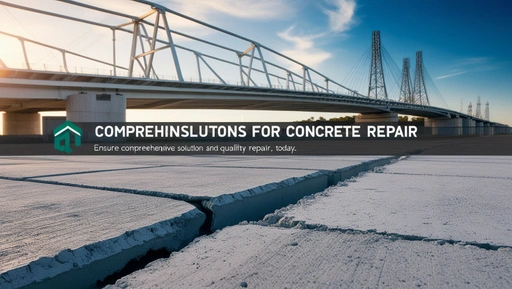Concrete is the backbone of infrastructure, forming the foundation of buildings, bridges, roads, and more. Despite its strength, concrete isn’t indestructible. Over time, factors like weather, heavy loads, and environmental stress cause wear and tear. Concrete repair is essential to keep structures safe, functional, and long-lasting.
Why Concrete Repair Matters
Concrete repair is a crucial aspect of maintaining our infrastructure. Left unattended, minor issues can escalate, compromising the structural integrity and safety of a building or structure. Reactive repairs can also be costly compared to proactive maintenance. Ensuring timely repair not only extends the lifespan of the structure but also prevents potential hazards and significant financial losses.
Common Issues Requiring Concrete Repair
Several common problems necessitate concrete repair:
- Cracks: These can arise due to shrinkage, temperature changes, or structural loads. If not addressed, cracks can deepen, leading to water infiltration and further deterioration.
- Spalling: This occurs when the surface of concrete breaks away or flakes due to freeze-thaw cycles, corrosion of reinforcing steel, or poor installation methods.
- Settlement: Improper soil preparation or inadequate compaction can cause slabs to settle unevenly, resulting in functional and safety concerns.
Understanding these common issues helps in identifying the right repair strategies to address them effectively.
Types of Concrete Repair Methods
There are several effective methods to repair concrete, each suited to specific problems. Here’s an overview of the common techniques:
- Crack Injection
Crack injection is ideal for sealing cracks and restoring structural function. The process involves injecting epoxy or polyurethane resin into the cracks to fill gaps and bond the concrete back together. This method strengthens the structure and prevents further water ingress.
- Concrete Resurfacing
Resurfacing is used to rejuvenate worn-out concrete surfaces. A thin overlay mix is applied to restore the appearance and functionality without needing to remove and replace the entire slab. This method is perfect for driveways, walkways, and floors.
- Structural Strengthening
For structures experiencing significant load issues or damages, structural strengthening involves using materials like carbon fiber or steel reinforcements to increase load capacity. This approach addresses more severe damage and bolsters the safety and longevity of the structure.
- Concrete Lifting
Concrete lifting, or slab jacking, raises sunken concrete slabs by injecting material beneath them for support. It’s a cost-effective, quick solution for uneven surfaces like driveways and sidewalks, preventing further damage and restoring functionality.
Detailed Explanations and Benefits of Repair Methods
Crack Injection
Applications: Ideal for hairline to moderate cracks in walls, foundations, and slabs.
Benefits: Prevents water intrusion, restores structural integrity, and prolongs service life.
Suitable Scenarios: Best for preventing moisture-related damage and reducing further cracking.
Concrete Resurfacing
Applications: Used for repairing spalled or damaged surfaces.
Benefits: Restores a smooth, attractive finish while avoiding full slab replacement.
Suitable Scenarios: Ideal for driveways, patios, and commercial floors needing aesthetic and functional improvements.
Structural Strengthening
Applications: For damaged structures or those requiring enhanced stability.
Benefits: Reinforces the structure, increasing safety and durability.
Suitable Scenarios: Commonly used in bridges, parking garages, and industrial facilities.
Why High-Quality Materials and Professional Services Matter
The effectiveness of any concrete repair project hinges on two critical factors: the quality of materials used and the expertise of those performing the repair. Subpar materials may lead to short-term fixes that don’t last, while non-professional services can introduce further risks through poor execution. Whether it’s general repair or specialized services like concrete lifting in Ogden, seeking out reputable contractors with experience ensures that the work is done efficiently and to a high standard.
Proactive Maintenance is Key
Concrete repair is more than just a one-time fix—it’s about adopting a proactive maintenance strategy to ensure the longevity of structures. Comprehensive repair solutions are essential to addressing the root cause of issues while preserving safety, aesthetics, and functionality.
Conclusion
If your structure is showing signs of wear or damage, don’t wait for the problem to worsen. Reach out to a professional team to assess and address your concrete repair needs. Protect your investment and ensure the safety of all who rely on your concrete structures.
